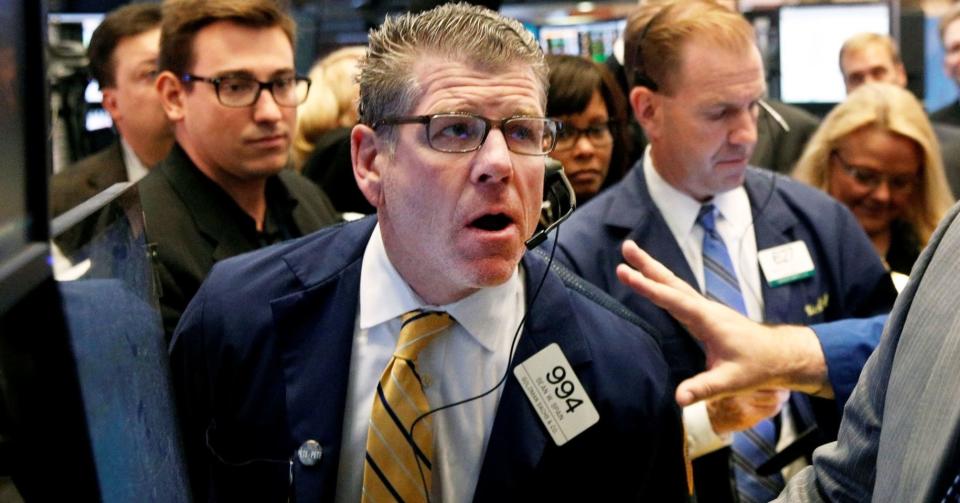Op-Ed: Relax. Here are 10 good reasons to stop panicking about interest rates

The unexpected election of Donald Trump prompted a strong rally the equity markets and a spike in fixed income yields, causing some investors to question the wisdom of investing in bonds. While data and public policy requires continued monitoring, I believe that the current move upward in rates is an overreaction and not a confirmation of future interest rate movements (and not necessarily indicative of what future tax legislative events might play out).
Rates will likely rise 25 basis points in December with additional increases to occur in 2017. Despite these increases, we do not expect a steeper spike as the fundamentals currently do not suggest that a more drastic course of action is probable. We expect the slope upward in rates will be gradual and not traumatic.
Given that low oil prices continue to create additional spendable dollars for consumers and businesses, we see no impending inflation spike that would cause the Federal Reserve to act aggressively. Remember, the Fed's main mission is to combat inflation and stimulate job growth. Their responsibility is not to react to policy proposals from presidential candidates.
There are 10 reasons why I believe the Federal Reserve will not increase interest rates in a hyperbolic fashion:
Any significant increase in interest rates would be a major headwind for the real estate market and in this fragile economic recovery, home-equity values remain as a cushion against economic bumps (the Federal Reserve knows this)
Stimulus efforts would likely be spread over a number of years rather than significantly front loaded
U.S. economy, while still growing, is expanding at an anemic rate
U.S. deficits are paid out based on interest rate levels and any increase in rates would increase the annual debt burden on the huge U.S. deficit
Wage growth over the last several years has stagnated despite a more recent bump in income expansion.
Globalization continues to drive wage rates down in more established economies. Combined with technology advances, companies are becoming more efficient and reducing reliance on labor
Countries across the world continue to maintain low interest rates with the accommodative posture likely to continue with slow GDP rates in Japan, China, Europe, and South America. Any rate policy that significantly differs from neighboring countries policies can cause economic harm.
Interest rate increases will impact the value of the dollar making U.S. exports more expensive to those outside of the U.S. This is a negative for GDP growth and can result in a buffer against increased inflation from stimulus programs
As it stands today, meaningful inflation does not exist that would compel the Federal Reserve to take dramatic action
The Federal Reserve has continued to delay interest rate increases despite stabilization of the U.S. economy. Their posture appears to be focused on keeping rates lower longer than many have expected. We have a very dovish Fed.
What about the rumored Stimulus Program?
Any tax cuts and stimulus programs will certainly increase economic activity and, for that reason, one should not fully ignore the recent interest rate spike in the bond market. But there is much debate as to the extent of the increase that will be passed even with a Republican president and Republican legislators.
It seems like a million years ago but just two years ago, the government was on the verge of shutting down as fiscally conservative Republicans blocked any increase in spending that wasn't paid for with corresponding spending cuts. In other words, there still is a legislative process in place that may very well limit the intensity of tax cuts and stimulus programs that are actually implemented. We shall see.
Measured increases
I do believe rates are rising, but increases will likely be gradual in nature. I expect the Federal Reserve to raise by 25 basis points in December despite political uncertainty. Our base case scenario is a .50 to .75 basis point increase in 2017 though much of this depends on economic growth, the scope of the stimulus, and the size of any infrastructure plan implemented. As previously stated, it's important to watch developments in the news regarding how much stimulus is inserted into the economy. Conditions change and judgments can change to.
Bottom line: don't panic about rates. Rates have actually decreased since the first of the year. On January 1, 2016 the 10- year Treasury rate was 2.27 percent. Now, after the significant rise in interest rates over the last week, the 10-year Treasury is now trading at approximately 2.22 percent yield. Yes, this is a significant rally from the lower rates that existed a month ago but it's important to keep in mind context regarding the current slope of rates.
It makes sense to reposition portfolio fixed income assets towards lower duration holdings (certainly less than the aggregate bond market). Simultaneously, one might also attempt to capture additional yield from floating rate instruments with shorter durations as well as investing (with constraints) in lower investment-grade assets that can provide a yield pickup to offset lower durations.
More from Investor Toolkit:
Inflation expectations 'soar' after election
5 tips to avoid IRS tax scams
Battered Valeant stock worth double, Bill Miller says
Commentary by Michael A. Yoshikami, the CEO and founder of Destination Wealth Management in Walnut Creek, California. Follow DWM on Twitter @DestinationWM.
For more insight from CNBC contributors, follow @CNBCopinion on Twitter.

 Yahoo Autos
Yahoo Autos 
